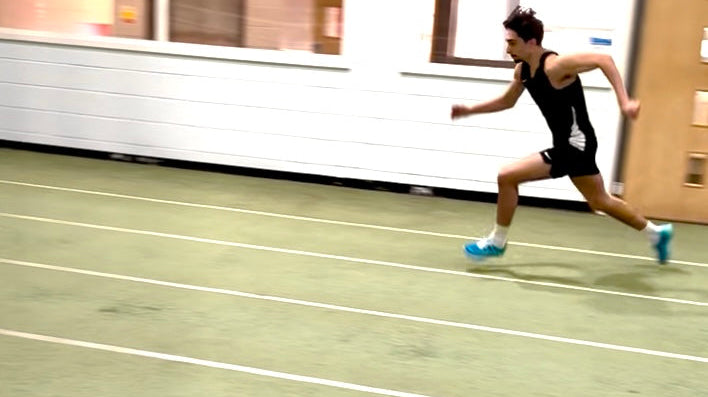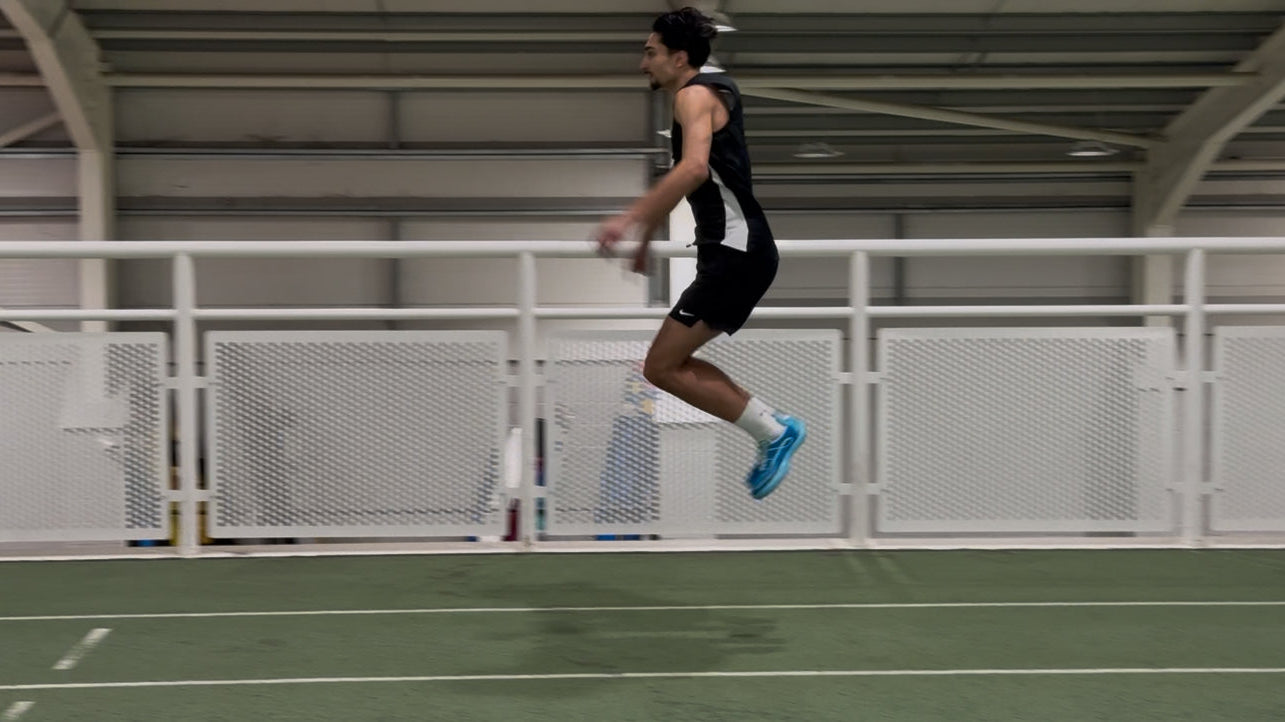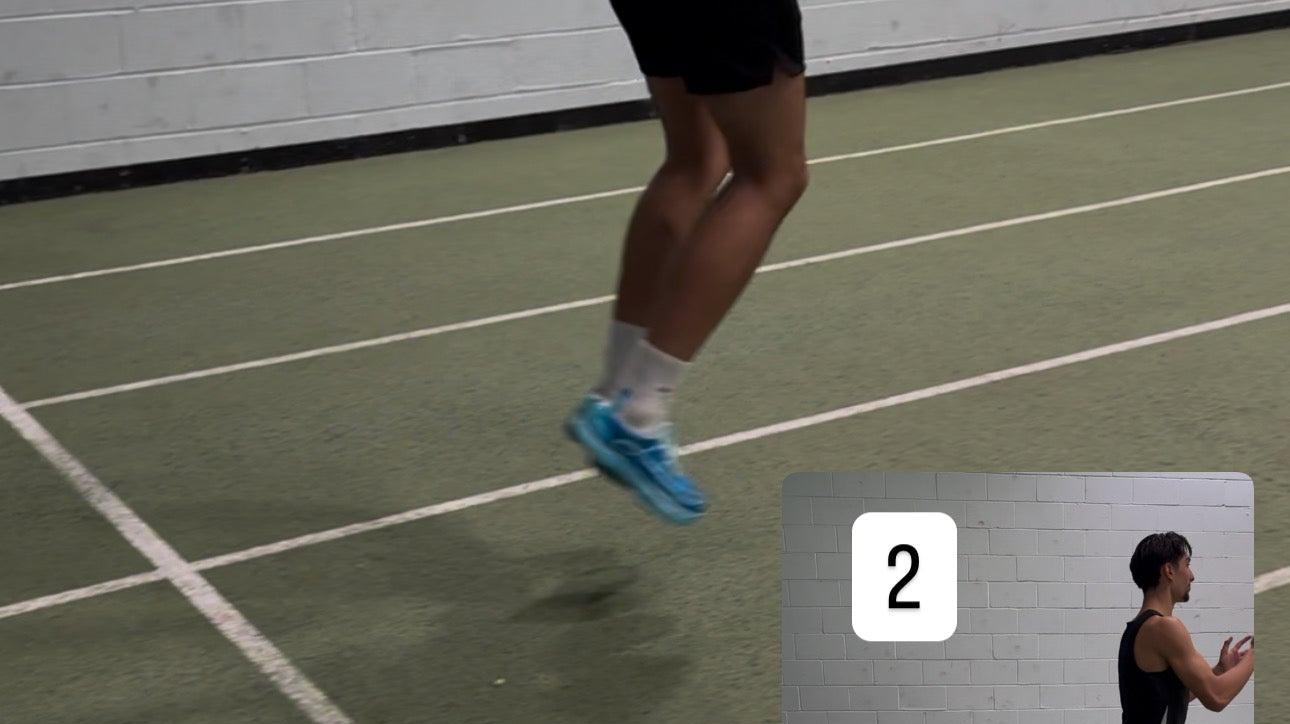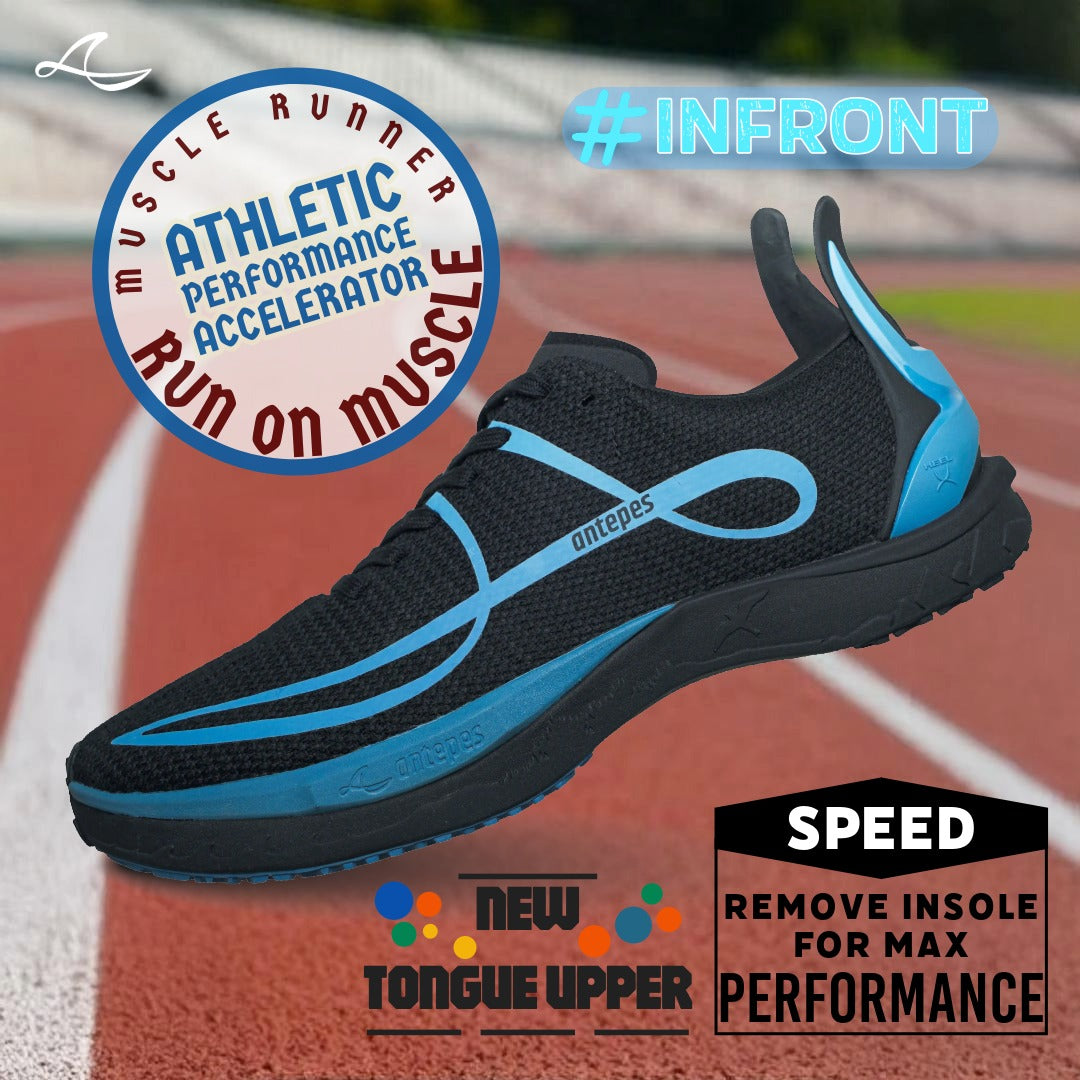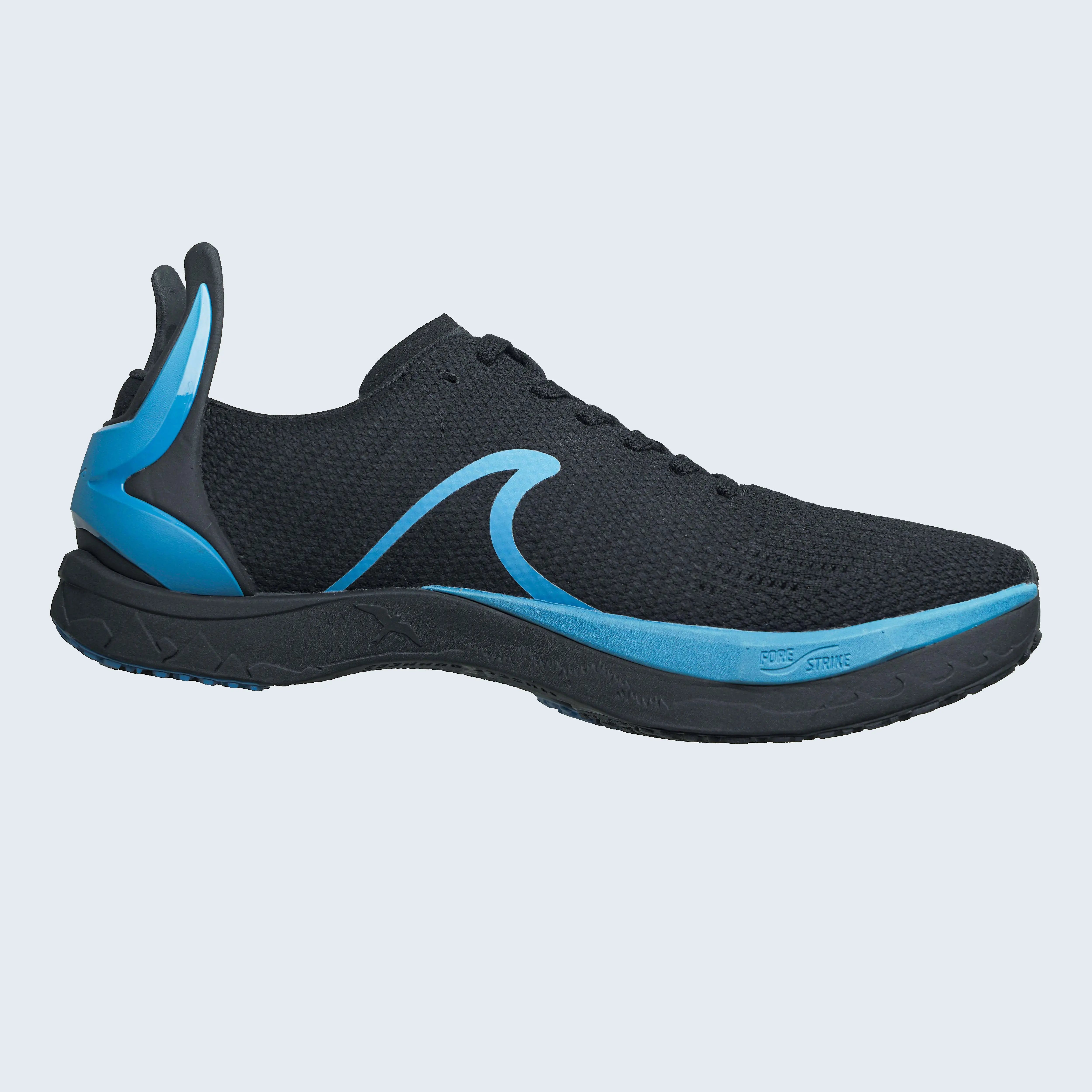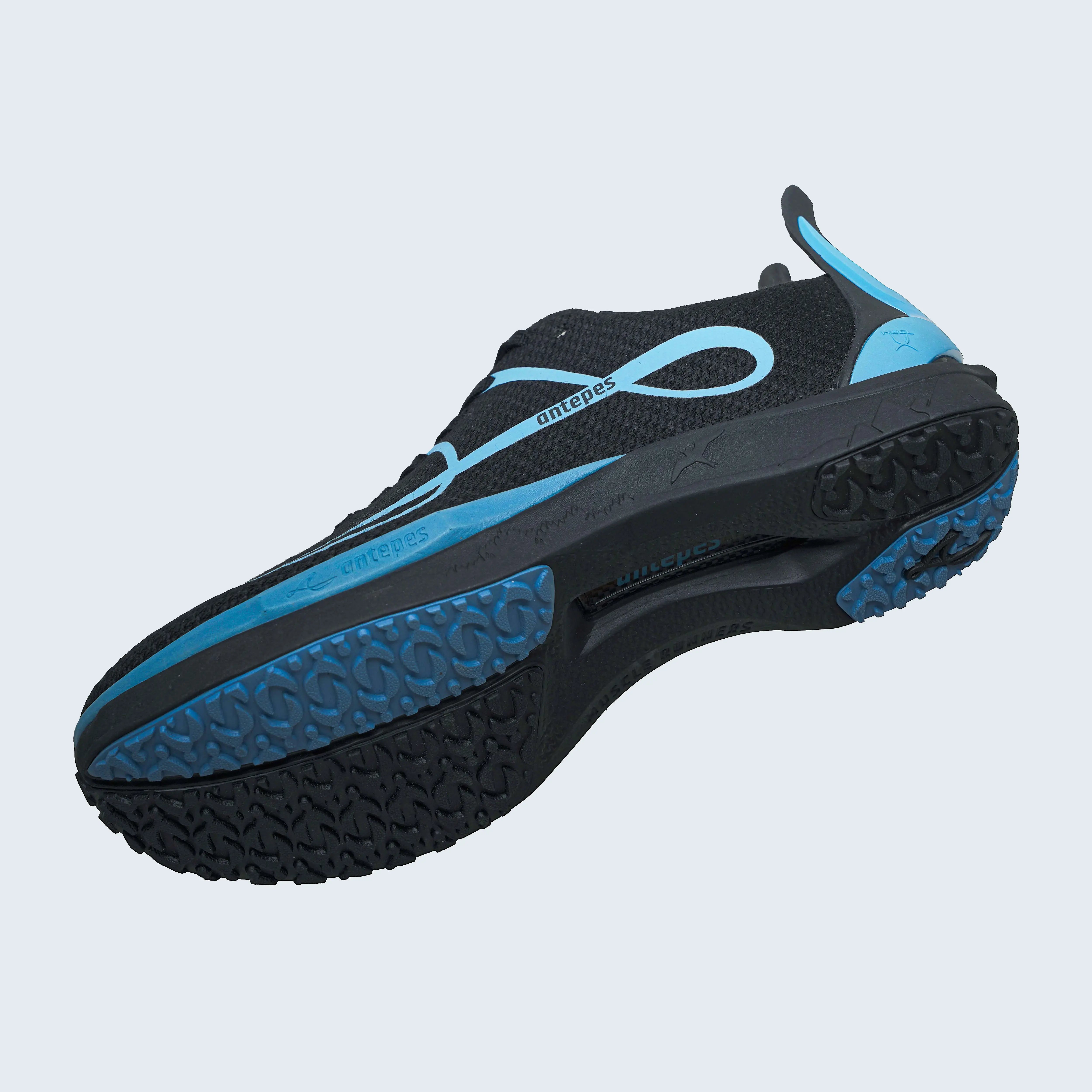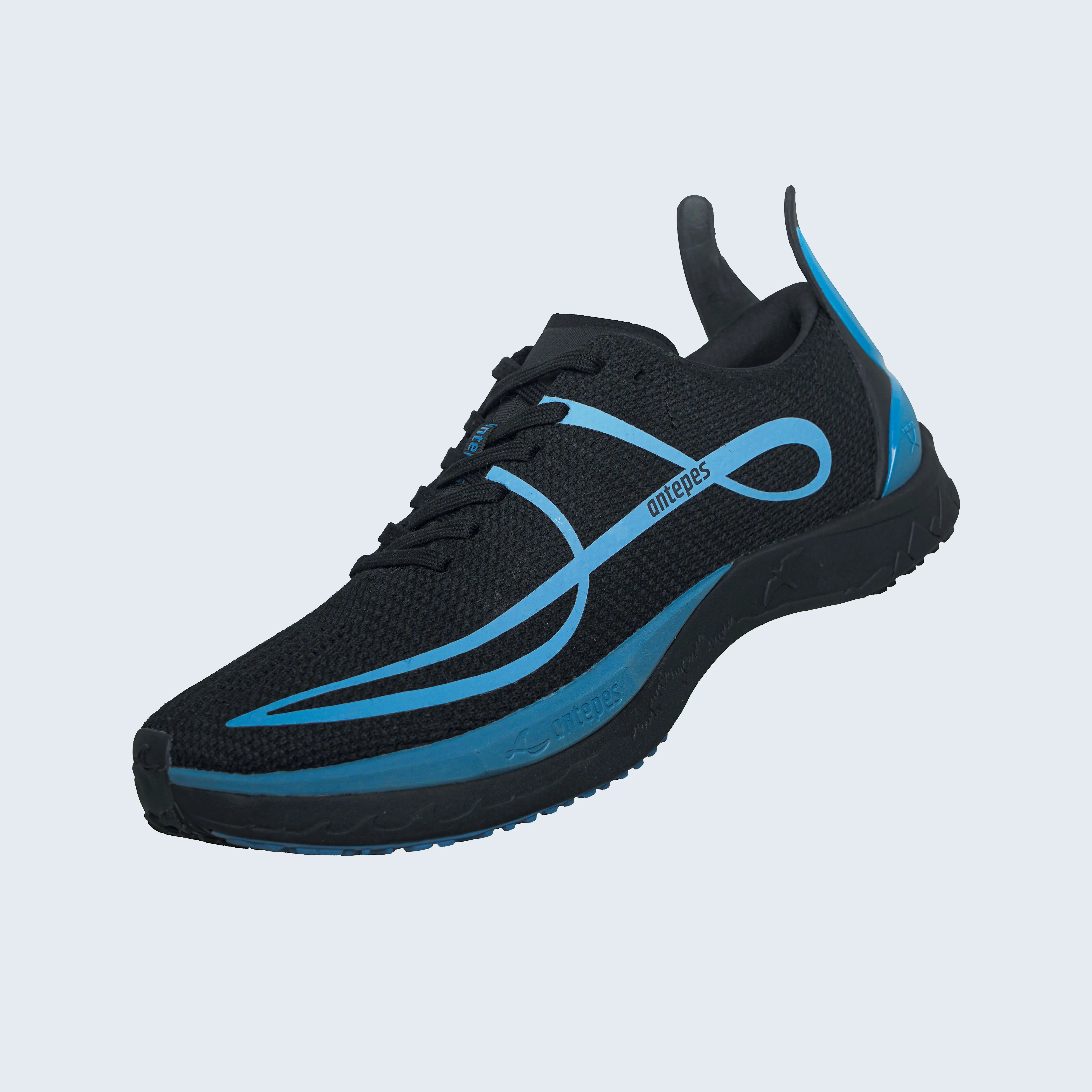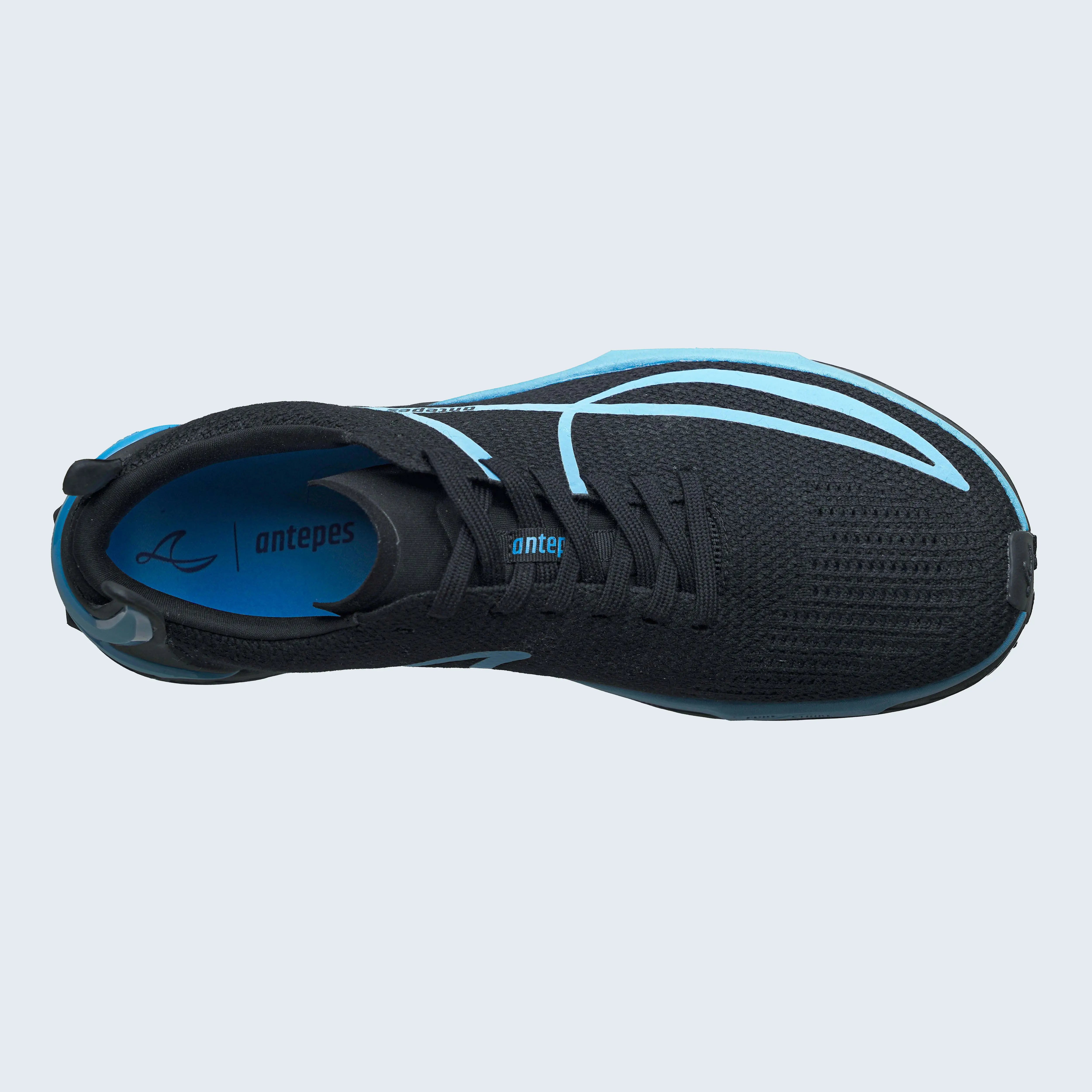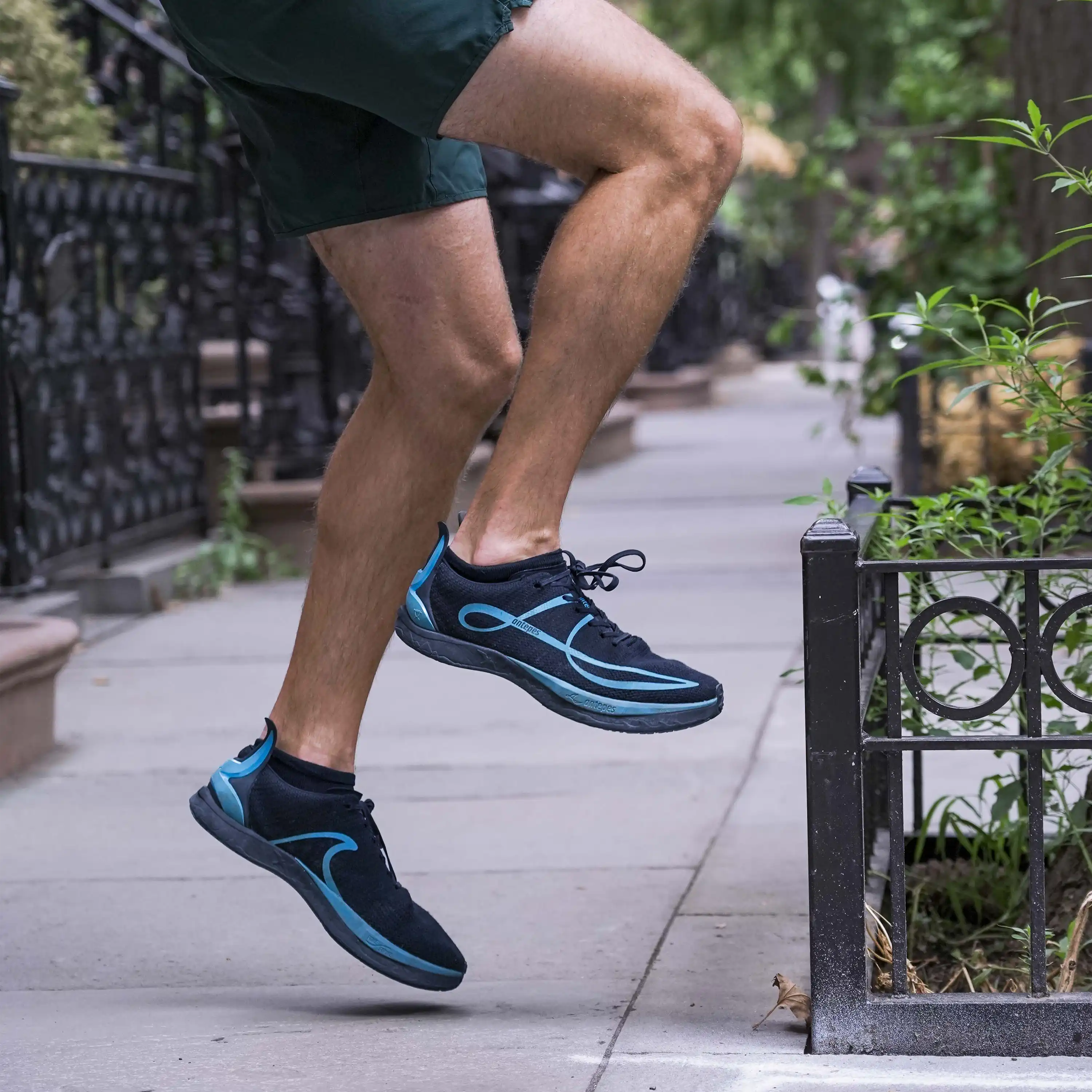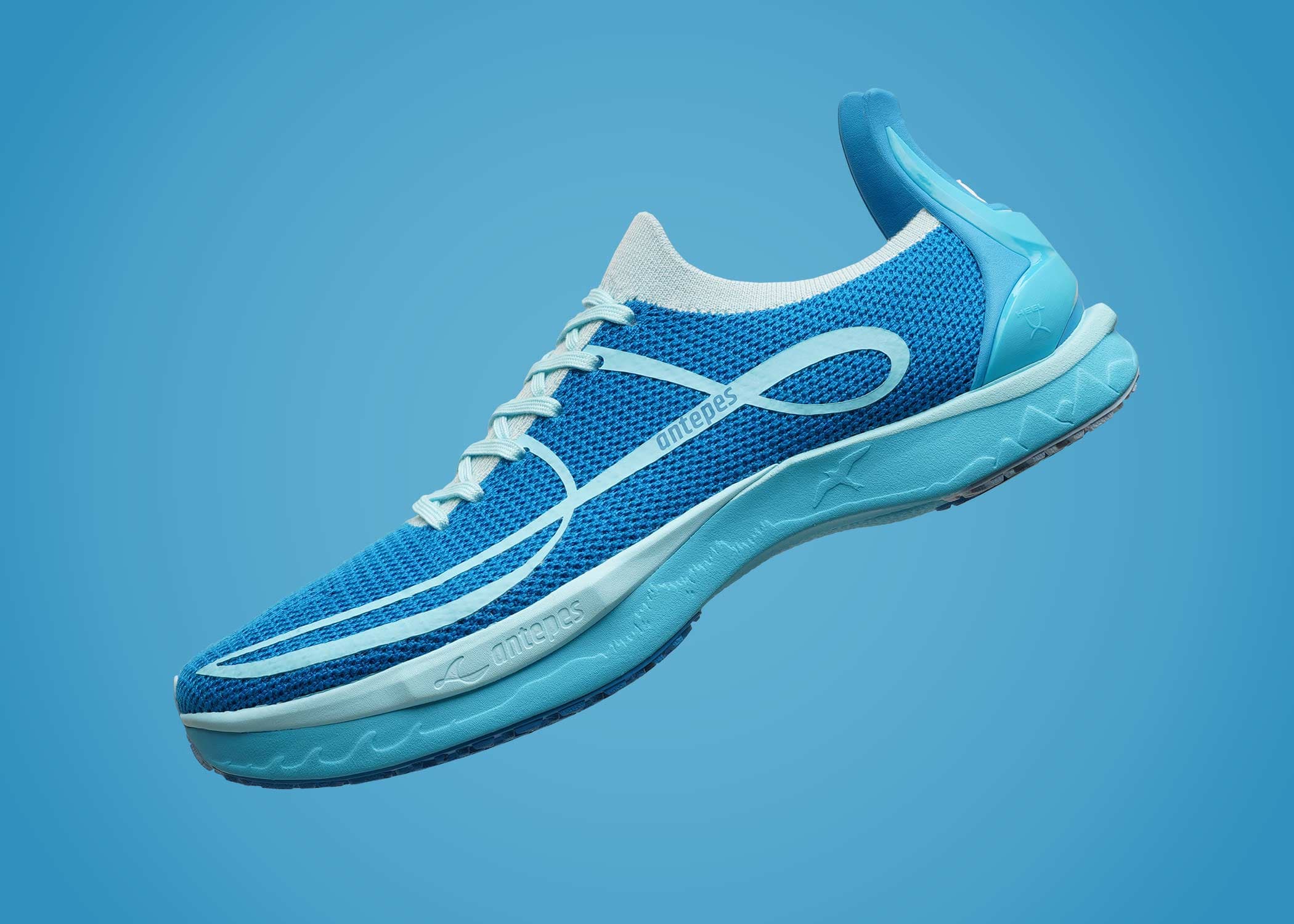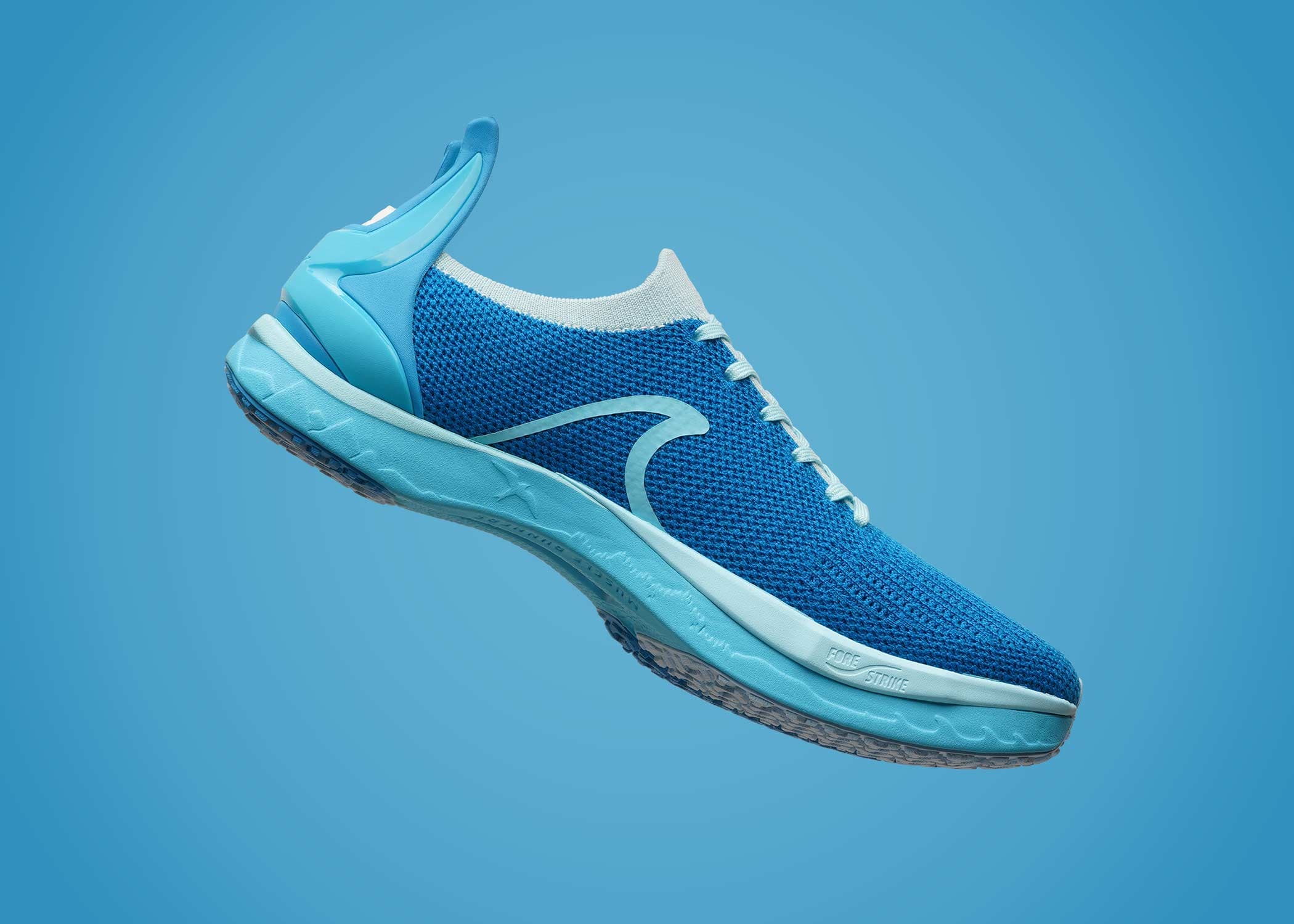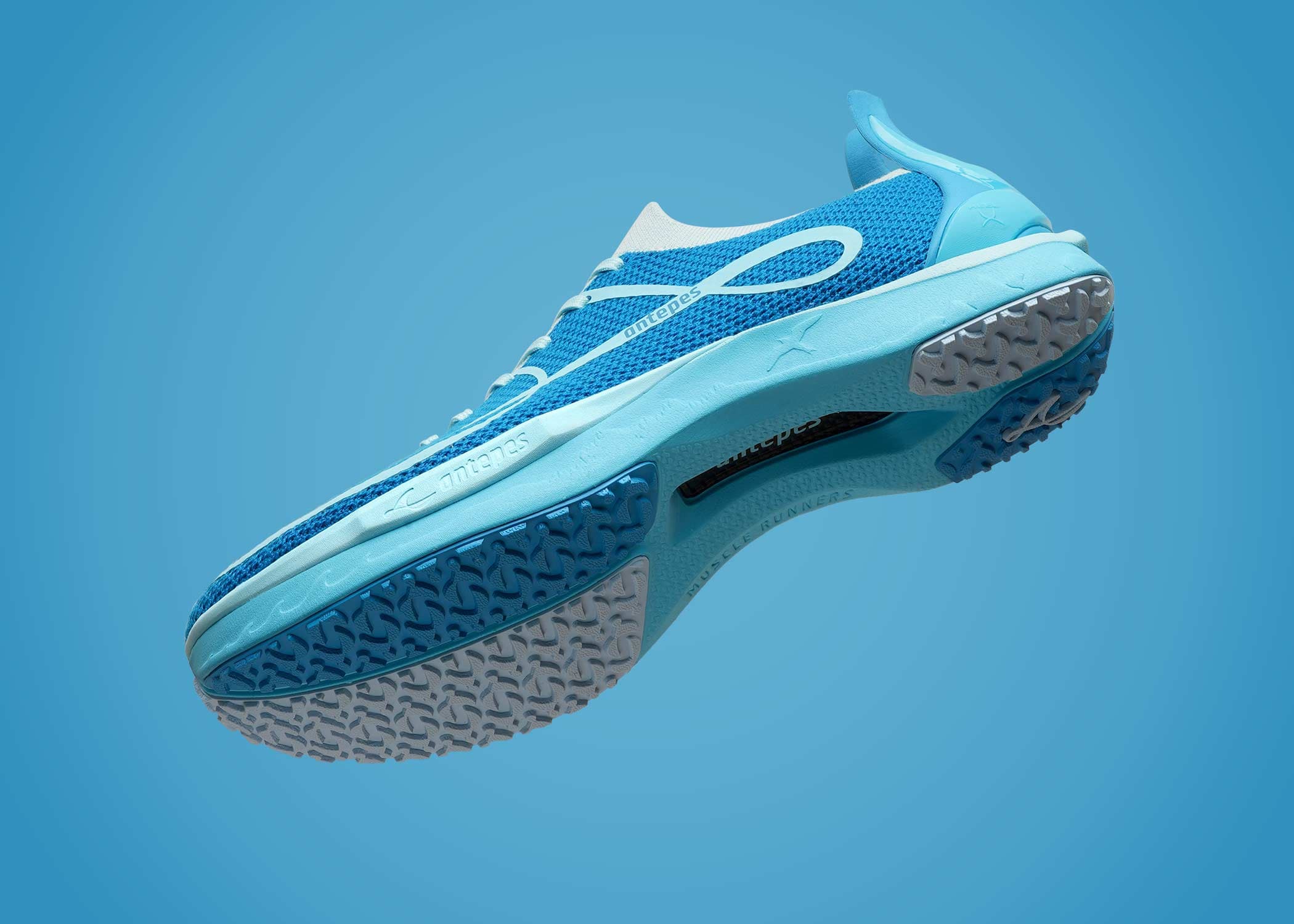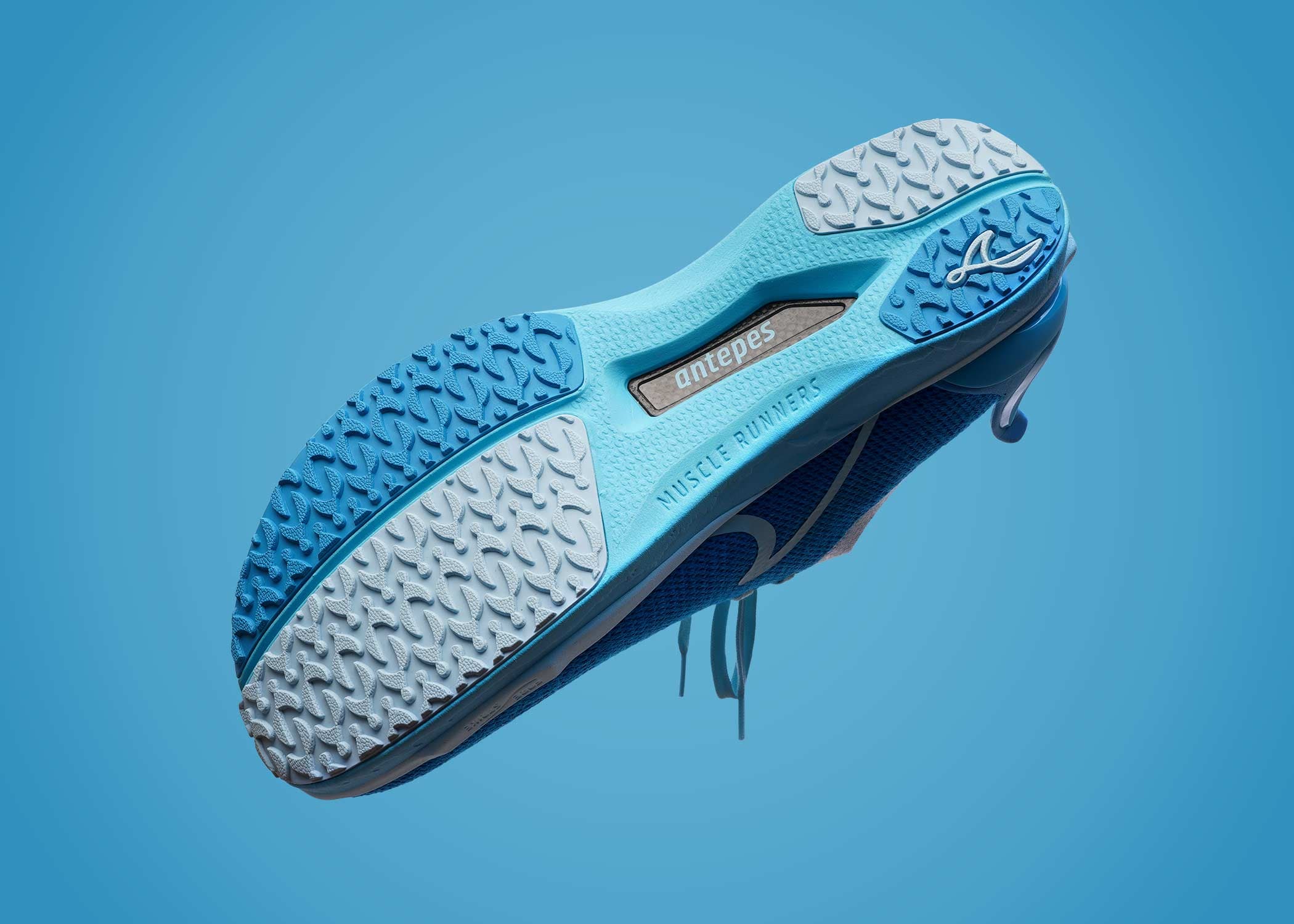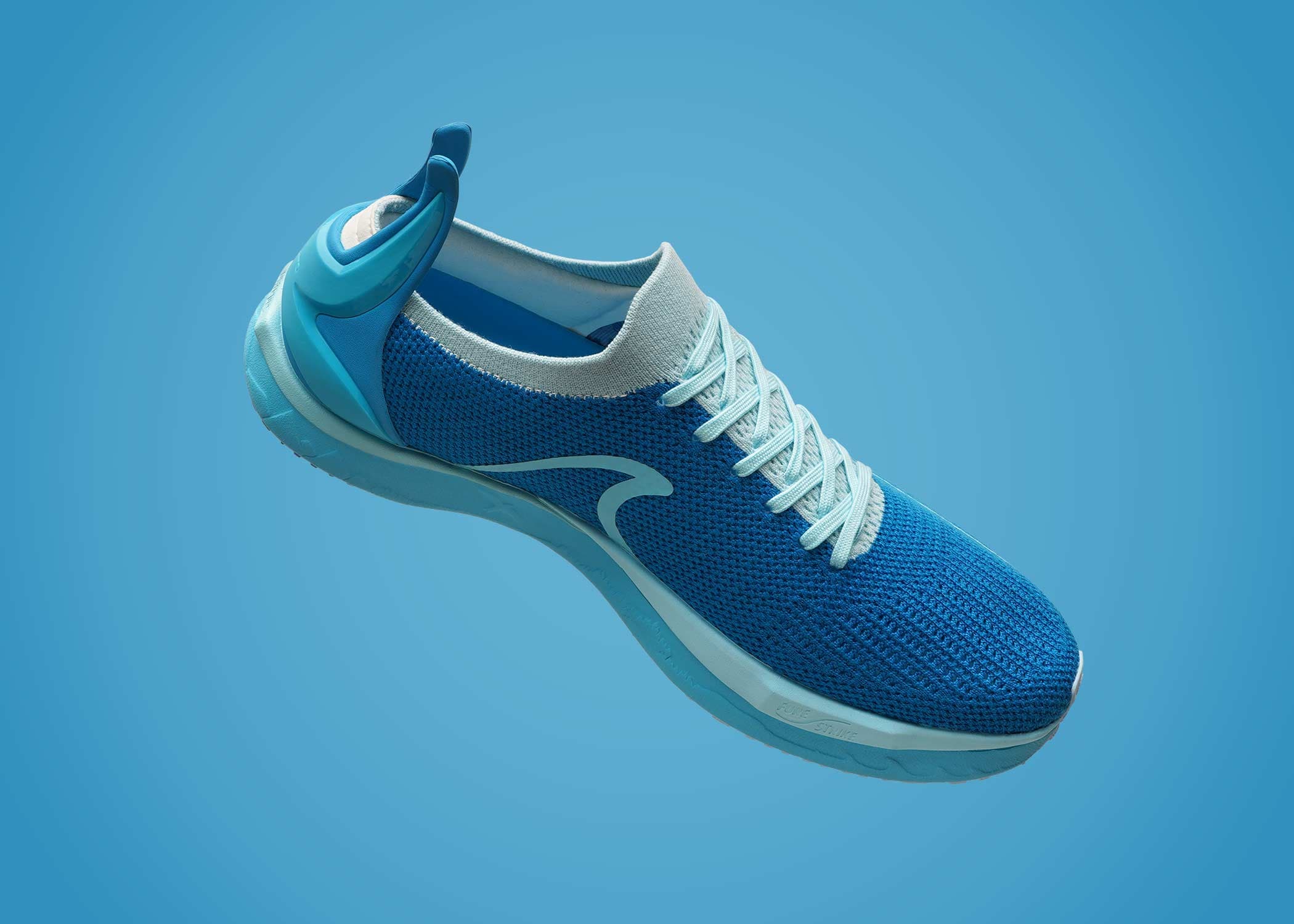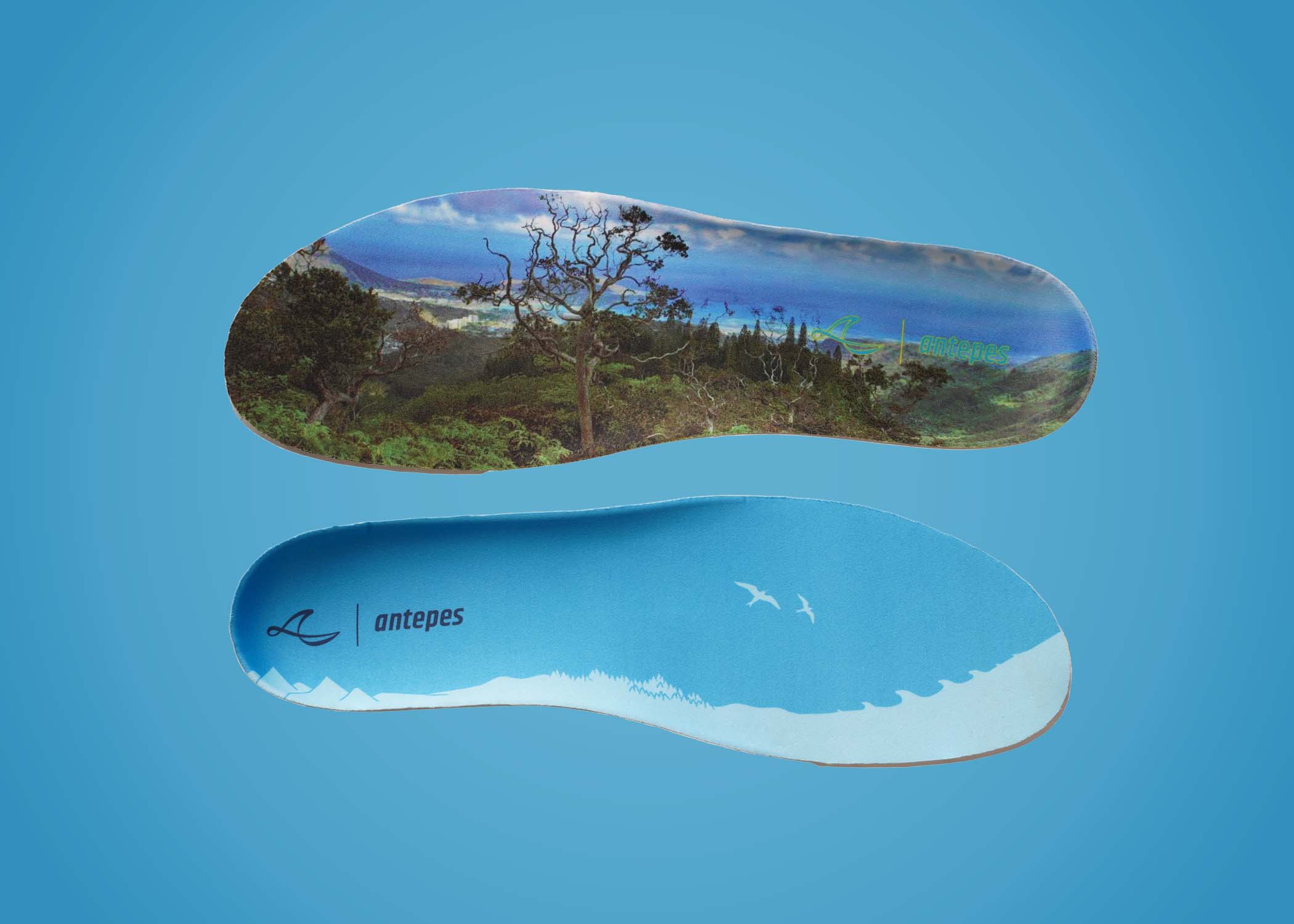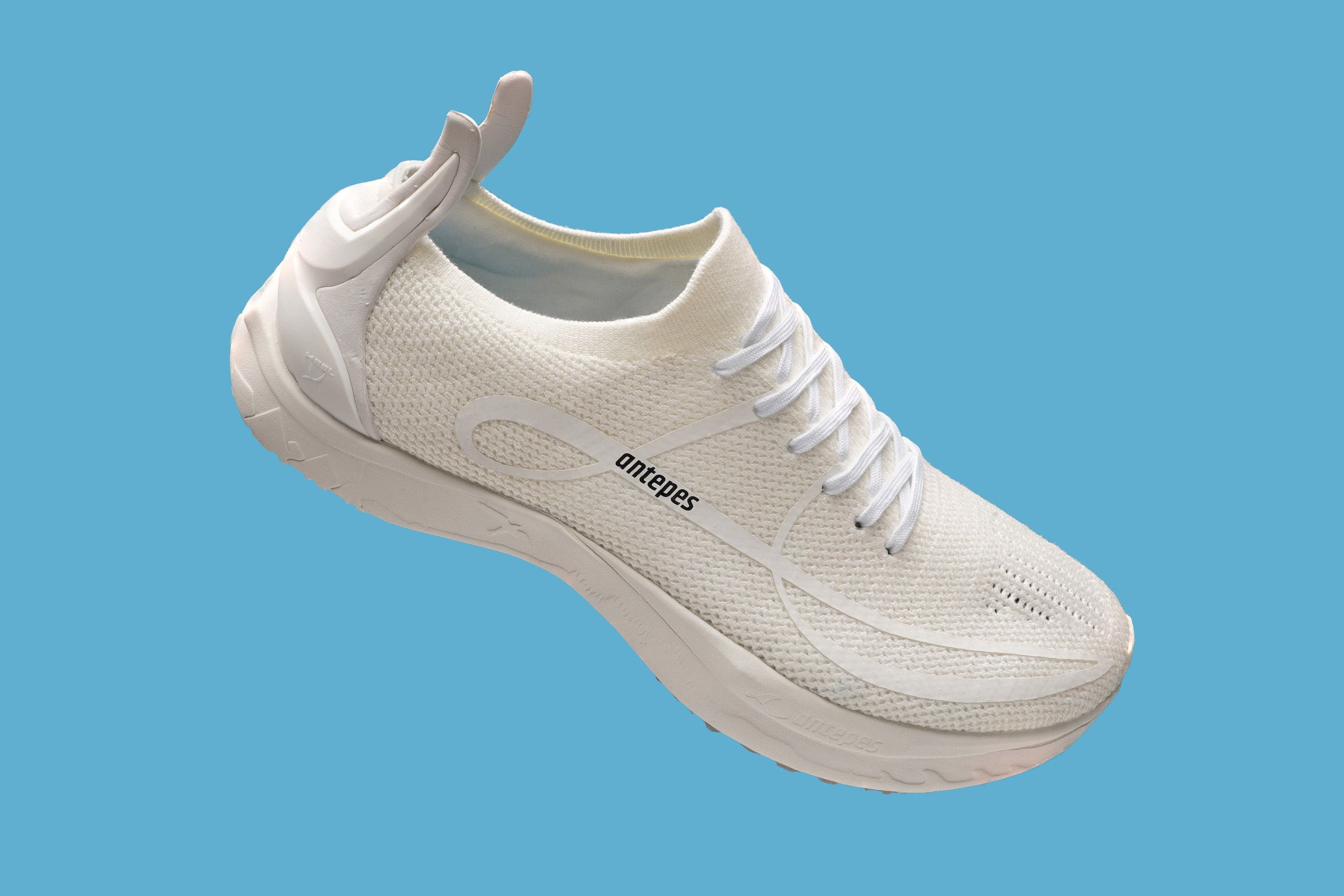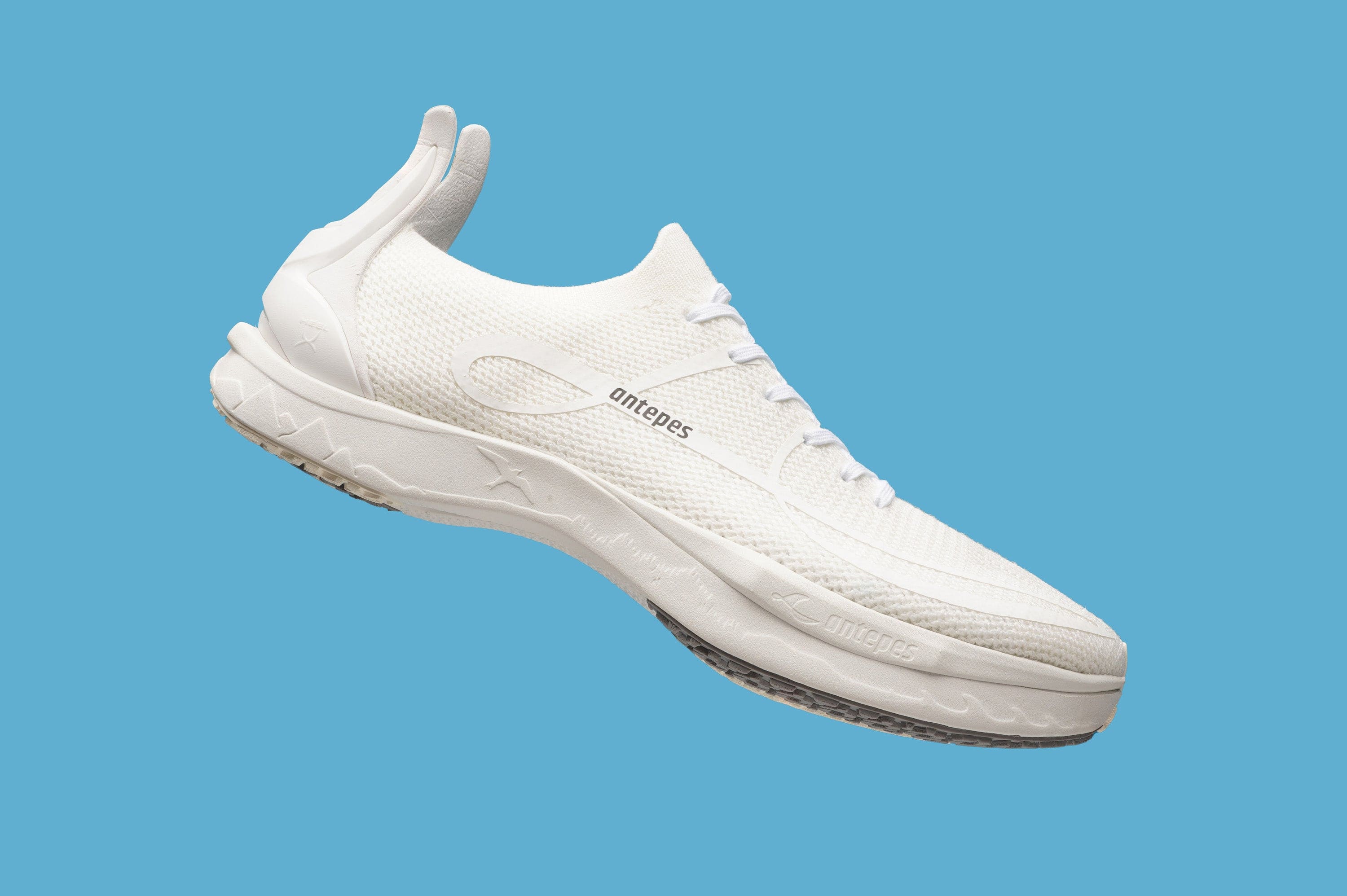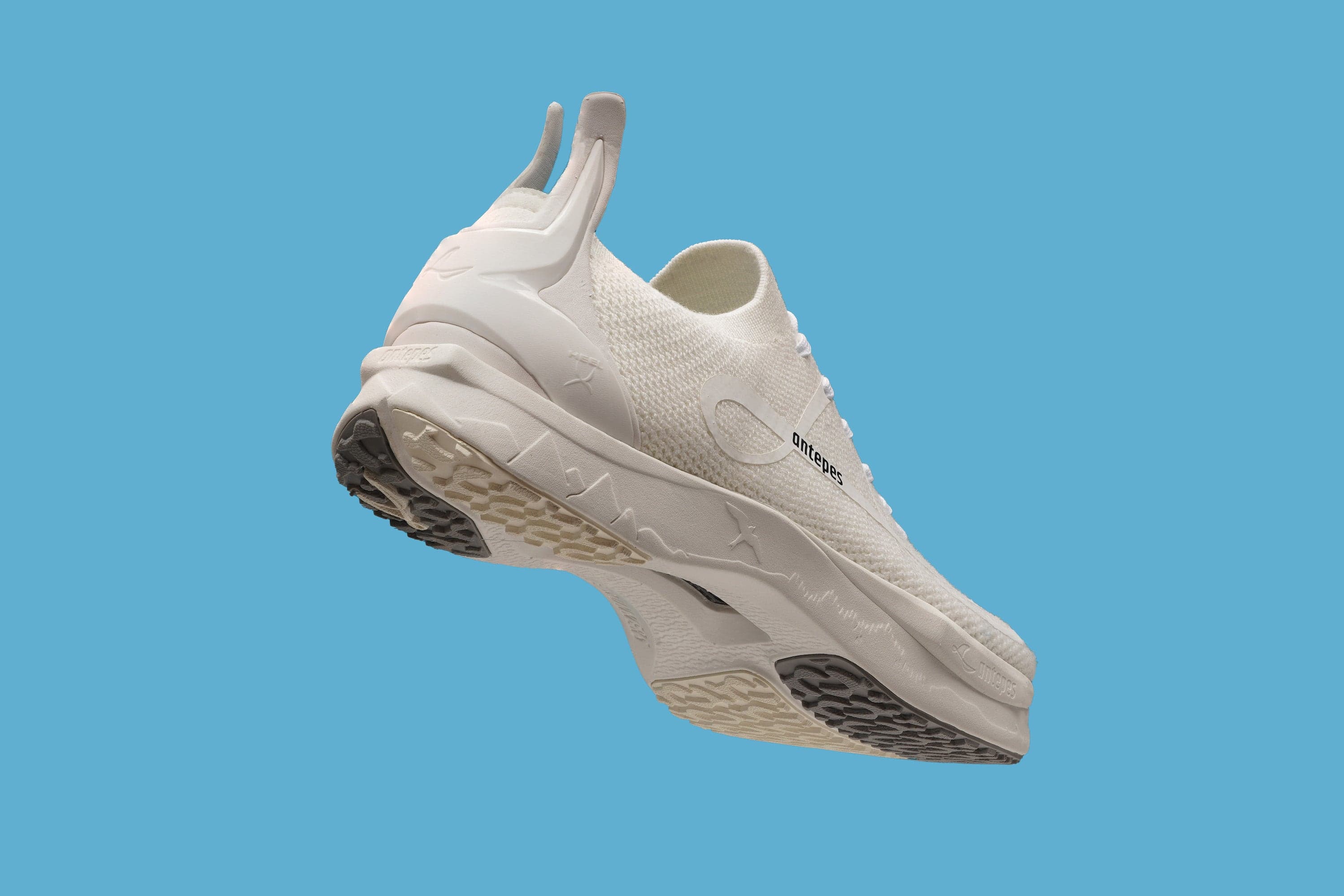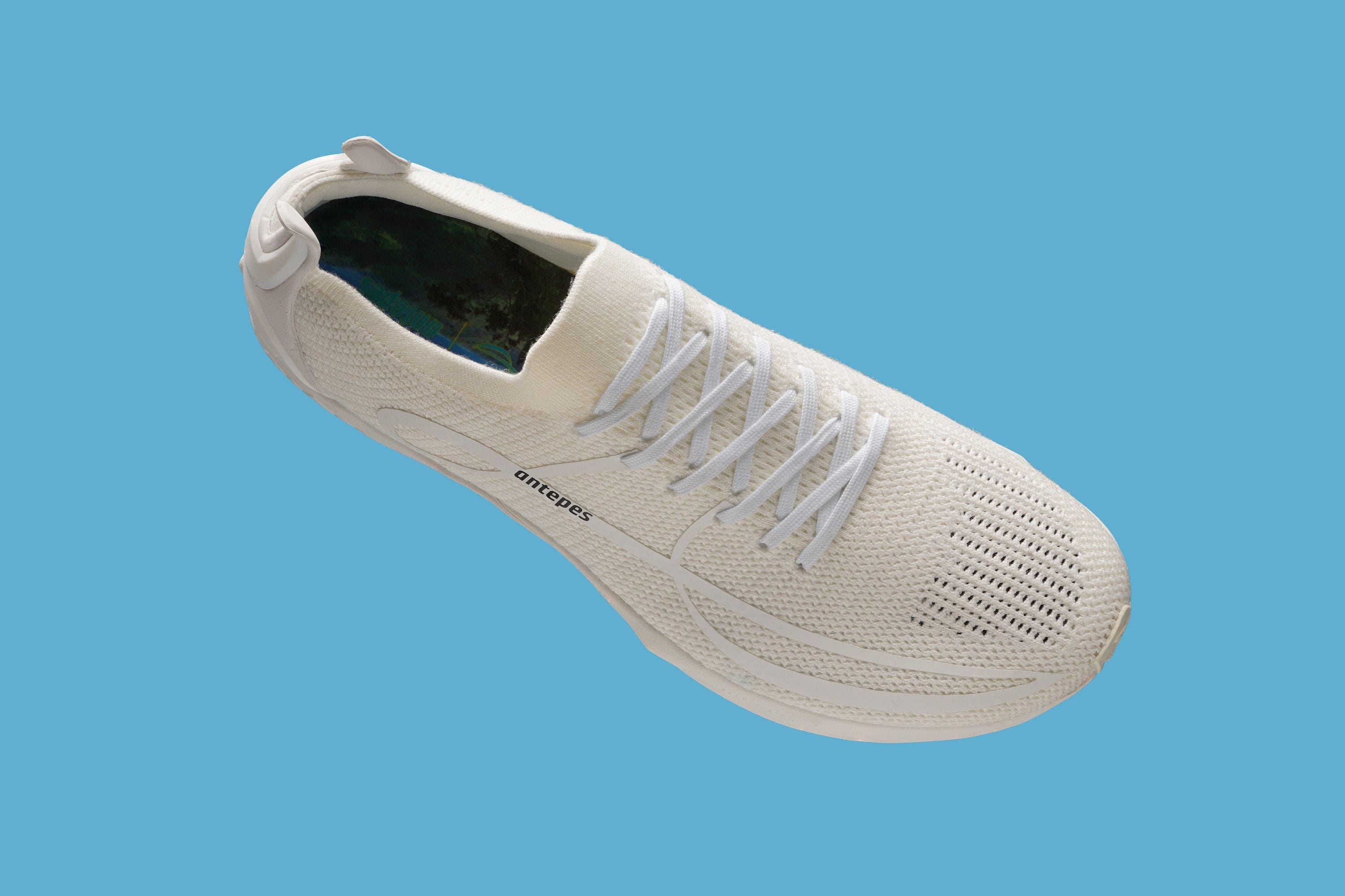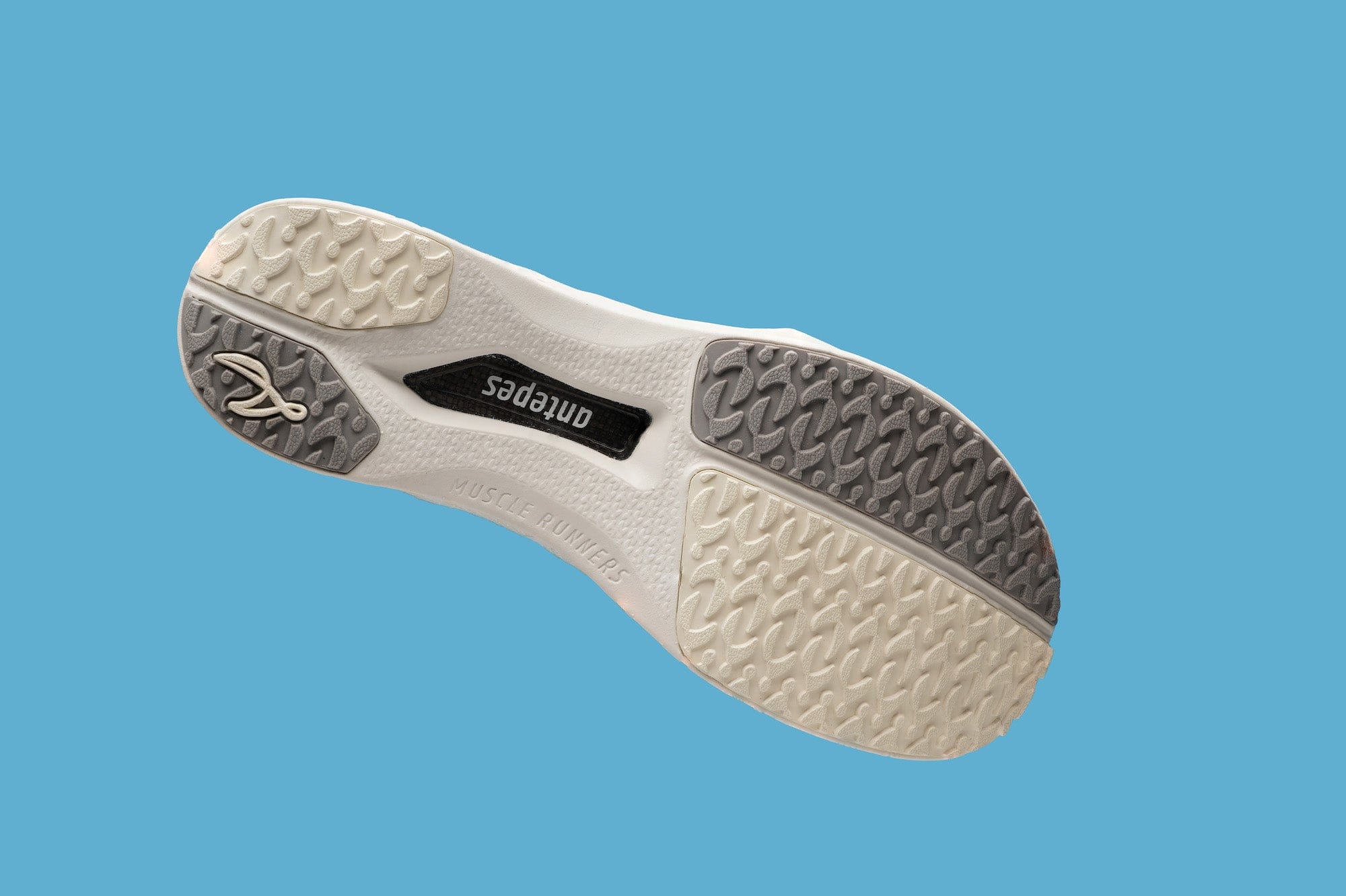There’s a lot of hype surrounding so-called “super shoes”. The first sub 2 hour marathon (Eliud Kipchoge 1.59.40 in 2019) was achieved in shoes which potentially ushered in the trend. Kipchoge’s were super-light, specifically cushioned and featured a carbon-fiber plate. These are features Muscle Runners share. However, in many ways the shoes are at very different ends of the super shoe spectrum.
Antepes' Muscle Runner, it can be argued have ushered in a new blueprint for just how a fast super shoe should be made. Indeed, many rival shoe companies seem to be borrowing from the Muscle Runner’s unique, innovative design.
Muscle Runners are speed shoes not distance shoes. They are all about increasing the ability of your legs to produce more power whilst utilizing a forefoot strike (Fore Strike® technology - also there's a clue in the name Muscle Runner!!).
The latest incarnations of the marathon super shoes are more like platforms compared to the Muscle Runner’s akin to track spike inspired design.
Later incarnations of Kipchoge’s specialist distance shoe feature a full-length carbon fiber plate which as the marketing describes is: “… intended to minimize energy loss during toe bend without increasing demand on the calf, it springs up under your heel as you stride forward”.
In contrast the Muscle Runners are designed with ForeSpring™ - a carbon fiber plate in the forefoot that's more compliant - “… specifically designed for impact distribution and fluid energy transfer”. The dynamic of the shoe is very different. Indeed they will increase demand on the calf muscles.
The shoes have a “heel to toe cushioning gain” - Forefoot Gain®. Basically, they encourage the foot to rotate over the forefoot and not use a heel-strike action.
Track inspired
Muscle Runners as noted are more like a track spike – they increase propulsion and boost toe-off. It’s easy to sprint in them – something that would be much less achievable in marathon/distance super shoes should you want to try. Yet you can run distance in the Antepes. We recommend up to 3-5k at a time and up to a maximum of 3 times per week.
They will keep you moving forwards whatever your speed – it’s actually difficult to drop back onto your heels and move more slowly.
Of course, you need to get used to them and train accordingly (more on that in other posts).

Stiffer is better…
Research indicates that shoe stiffness is a determinant of sprinting speed. Basically, and within reason, and subject to some athlete differences, increasing shoe bending stiffness increases sprint speed.
You’ll immediately note that the Muscle Runners have this stiffness, but are not overly stiff like track spikes or marathon-type super shoes.
On the road you will feel a powerful push as you transition from stride to stride. The more power you put through the forefoot the greater the energy return will be. However, even at slower – even marathon paces – you will still experience this “push”.
How to make the most of the Antepes’ push
In order to maximize the push at fast and sprint run speeds you will need to use your hips - see the front and back of your hips (flexors and extensors) as the axel around which your legs spin.
Elite jumps and sprints coach John Shepherd says: “The more power you have in your hips the faster you will run – everything else being equal, as long as your run/sprint technique is up to it. “ (More on that from Coach Shepherd in future posts.)
So, super-shoes are not all created equally even though they boost speed. Muscle Runners are that breed apart. If you are a sprinter, basketball player, football player and yes, even a distance runner, they will put a spring in your step – or should that really be real speed in your step.



